Newsletter | Experience Kerala's small towns, with these evocative Malayalam films
Several contemporary Malayalam movies have evocatively captured the milieu of Kerala's small towns and villages, writes Neelima Menon.
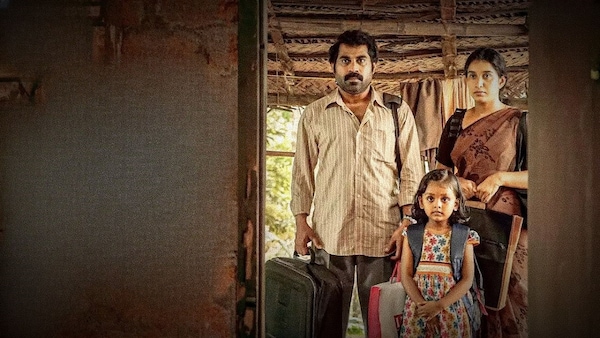
Still from Madanolsavam
Last Updated: 07.22 PM, May 18, 2023
This column was originally published as part of our newsletter The Daily Show on May 17, 2023. Subscribe here. (We're awesome about not spamming your inbox!)
***
IN Madanolsavam, Madanan lives in an interior village in Kanjangadu, North Kerala. He and his morose aunt occupy a rundown house that urgently requires (among other things) a fresh coat of paint. Directed by Sudheesh Gopinath, the film chronicles Madanan’s journey from being a scapegoat in electoral fraud to eventually upping his survival game. Written by Ratheesh Poduval (whose 2022 directorial Nna Thaan Case Kodu is texturally similar to Madanolsavam), what keeps you immersed in this socio-political satire are the original and detailed characters who are intricately weaved into the terrain they occupy. Be it their ecosystem, the dialect, ethnicity, or the characters stripped of artifice, these characters seem incredibly lived in. The aunt who potters around, harrying Madanan to bring her red bananas, the monotonous frugality of his breakfast, the detailing of his occupation, his hand-to-mouth existence, the endearing awkwardness with which his lust and love for Alice is crafted, or the neighbour who is something of a hero for his tree-climbing skills — the slice-of-life narrative is on point when it comes to the details.
TRAVELLING into the cinematic past, we saw KG George’s 1981 film, Kolangal, set in a fictional village in central Travancore, that carefully sketched the lives and livelihoods of those who peopled it. Sathyan Anthikad, meanwhile, trained his lens on an imaginary village in Kerala in Ponmuttayidunna Tharavu, with its fair share of original characters. Though various Anthikad films had villages and small towns as backdrops, they weren’t delineated by a geographical identity or ethnicity. They could be any village or town in Kerala, with no specifics on the dialect (mostly Valluvanadan), caste, religion, way of life, food, occupation, or politics.
That’s where Dileesh Pothan, a contemporary filmmaker who has largely been influenced by the Sathyan Anthikad template, made a difference. It’s evident right from this first film — Maheshinte Prathikaaram (2016) — that traced the coming-of-age story of Mahesh, who runs a photography studio. The narrative is located in the interiors of Idukki, and it painstakingly absorbs the topography, people, and their features. From the Idukki dialect; to people who make a living cultivating plantation crops; the local church serving rice gruel on Sundays; neighbours who bond over tapioca-weeding; houses that store sacks of spices, red chilies, and cocoa; the narrow roads and junctions; the old-fashioned, dimly lit homes with airy rooms, large kitchens and front courtyards; the red-flex hoardings before hotels — the film misses nothing. Pothen notches up the wafer-thin storyline with his obsessive eye for detail, pulling so many distinctively ordinary characters into the narrative that there isn’t anyone who can be called “nondescript” in his films.
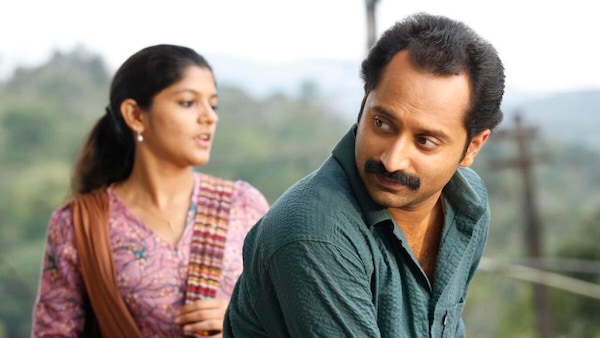
You can witness this stubborn eye for detail in his next film as well, Thondimuthalum Driksakshiyum (2017), which is steeped in the essence of the Kasaragodian landscape. But even when the film begins in Cherthala, where the central characters Sreeja and Prasad reside, Pothen doesn’t fail to keep it real. Their romance blossoms against the backdrop of the backwaters, as they travel on boats. Be it their homes, temples, shops, landscape, agriculture, people, caste, and traditions, Alappuzha is breezily outlined. As the couple migrates to Kasaragod, we see the farthest Northern corner of the state that’s rarely captured in cinema except as a stray reference for cops who get punishment transfers there. From the dry and dusty countryside, their unique dialect, homes built in remote localities, local festivals, tiny shops, and a civilisation that is still evolving, the film has one of the most authentic depictions of this part of the world. Not to forget the cops who are so true to real life!
Meanwhile, in Nna Thaan Case Kodu, that unfolds in the Kanjangadu/Kasaragod belt, Poduval brings the local flavour to festivals, dialects, occupations, and people. From the judge and politician, to the auto driver and the thief, you can see the authenticity.
The Fort Kochi/Mattancherry terrain has been generously covered in Malayalam cinema in the last 10 years. In Rajeev Ravi’s Annayum Rasoolum, a desi spin on Romeo and Juliet, the Rasool-Anna romance evolves amid the ethnicity and visual aesthetics of Fort Kochi. The boat jetty, ferry rides, the melting pot of cultures that flourish in the city, the elaborate carnival culture, the multi-cultural architectural shrines, foreign tourists, and the charming narrow streets, beaches, and alleys. While Kochi has been captured tangentially in many films, Annayum Rasoolum is a realistic portrayal of Fort Kochi through the eyes of its lower middle-class residents and their daily struggles to survive.
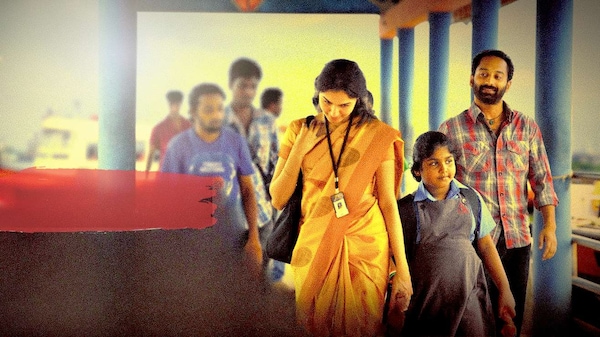
Parava, which marks the directorial debut of actor Soubin Shahir, is a love letter to his hometown Mattancherry. It starts right from the title cards that ingeniously unfold over the colourful but grimy lanes of Mattancherry with walls that have peeling paint, houses choking for space but with massive promenades, and huge playgrounds. The narrative is set in a Muslim household, where two adolescent boys raise pigeons as a hobby. Being a terrain he grew up in, Shahir gets the details to a T — the Kochi dialect, the food, the weddings, the interiors, the trade, and the people. Food is deliciously layered in the narrative — pathiri soaked in coconut milk, Imran’s community fish biryani, or their overwhelming love for beef and parotta. Parava also lightly touches on the custom of marrying off adolescent girls in Muslim communities. Women are rarely spotted without a hijab even inside their homes.
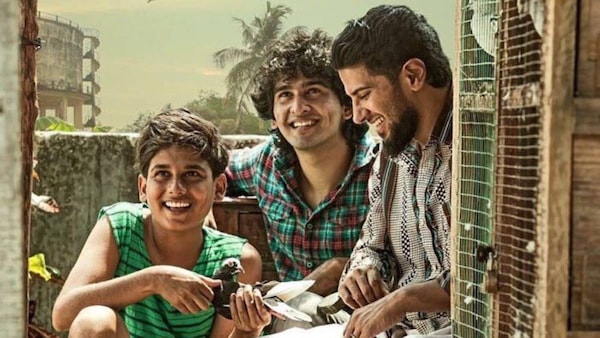
Similarly, Zachariah’s Sudani From Nigeria is a love letter to Malappuram, a topography and community that has been stereotyped for decades in Malayalam cinema. Everything co-exists in the film for Zachariah — his roots, ideology, and cinema. Football is a passion, food is a celebration, and families are forever — and that’s exactly what Sudani From Nigeria broadcasts. The film pivots around the coming-of-age arc of a football team manager placed in Malabar. (The director once told this writer how in Malappuram they would discuss Barcelona and Real Madrid players casually, including their paycheques.) Food shares equal billing with football. The narrative beautifully captures the heart of a region and community, apart from overt nuances of dialect, customs and behaviour.
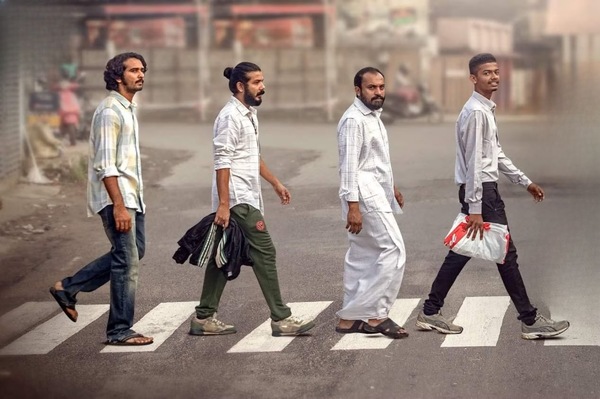
When it comes to Kottayam, Malayalam cinema has predominantly used the landscape to platform a community — the rich Christian planters/Achayans. As I’ve written elsewhere, it was KG George who first set the template for the quintessential rich, corrupt Christian planter family based in Kottayam with Irakal’s Mamachan and family. But in Joji, which can be called a loose adaptation of Irakal, Dileesh Pothen is finicky with the external details. Be it the interiors of the expansive house occupied by the central characters (who are all Jacobite Syrian Christians), placed in the middle of a rubber plantation in Kottayam/Ettumanoor, the detailing given to religious rituals, food, mores, customs, the gender roles, the dialect, humour or the livelihood of the characters: everything is outlined keeping an eye on the geography and the community.
Madhu C Narayanan’s Kumbalangi Nights introduced us to a largely undocumented coastal village (that the film is named for) and its lifestyle. There have been several such stories — good, bad and middling — that have emerged in Malayalam cinema in recent years. While it is of course commendable to see the kind of homework and detailing new-age filmmakers and writers are lacing the narratives with, it is also true that there has been a lot of duplication in an effort to keep up with the ‘trend’ — and which ultimately dilutes its charm. Maybe a blend of realistic, fantastical, or larger-than-life narratives will help. At least the current trend points to this as the way forward; after all, out of the 73 films released in Malayalam cinema so far this year, there has been only one superhit.

